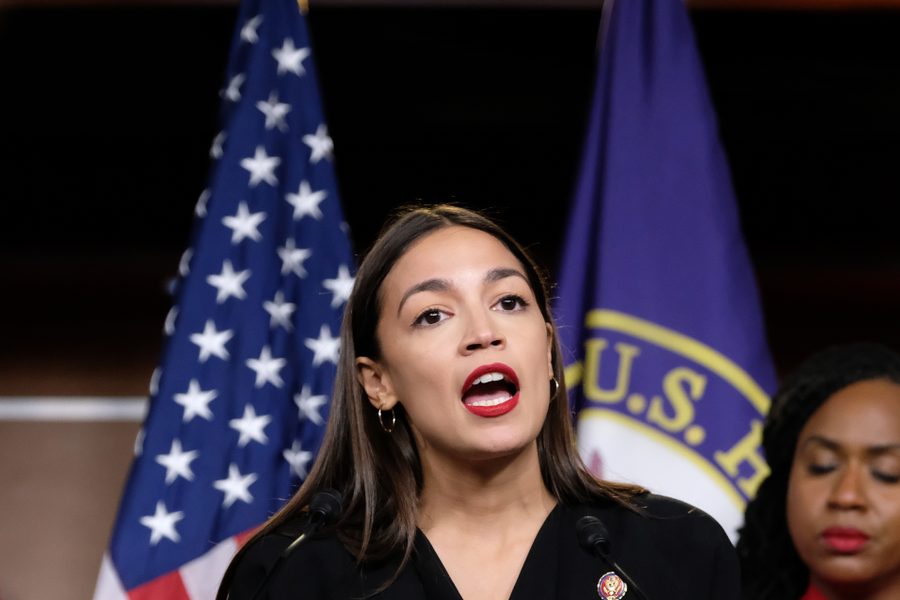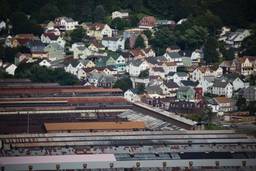The “Democratic” in DSA
The Democratic Socialists of America recommitted itself to using “elections, public offices and legislation” to build support for democratic socialist ideas.
Joel Bleifuss

As the Democratic Socialists of America (DSA) met August 2 in Atlanta for its biennial convention, a number of the 1,056 delegates did so with trepidation. They feared the gathering could devolve into factionalism, splintering the organization that, in the last five years, has grown from 6,000 to 55,000-plus members across 150 chapters.
Chris Riddiough was among those worried, a socialist feminist from Washington, D.C., who has been a leading DSA figure since its founding in 1982. For the past two years, Riddiough served on the strife-riven 16-member National Political Committee, the group’s elected governing body.
“Going into the convention, there were aspects that were reminiscent of the whole mischegas with SDS,” Riddiough says, referring to the implosion of Students for a Democratic Society at its 1969 convention. “The Left has a long history of shooting itself in the foot. My concern was that we not repeat that history.”
A few shots were fired in Atlanta, but none likely to cause irreversible damage. “I came out more optimistic than when I went in,” Riddiough says.
Convention delegates affirmed that participation in electoral politics is worthwhile. By passing the “Class-Struggle Elections” resolution, DSA committed itself to using “elections, public offices and legislation as vehicles to encourage working-class organization, promote progressive legislation and build support for democratic socialist ideas.” The resolution included a caveat that says DSA’s ultimate goal is to break with the Democrats “and their capitalist donors,” and “form an independent working-class party,” rather than reform the party from within.
A new party? It’s socialist Dems who are already changing the nation’s political conversation. DSA members Rashida Tlaib (Mich.) and Alexandria Ocasio-Cortez (N.Y.) were elected to the House as Democrats in 2018. And across the country, DSA members continue to be elected to state and local office, 29 of whom attended the convention. Most of these pols have run as Democrats (without “capitalist donors”) and won by turning out registered Democratic voters.
One such elected official at the convention was Ruth Buffalo, a North Dakota Democratic state representative and member of the Mandan, Hidatsa and Arikara Nation who works as a public health professional in Fargo. In 2018, she ousted a Republican incumbent who had led a GOP effort to suppress the Native vote.
Another is Gabriel Acevero, a Maryland Democratic state representative and an Afro-Caribbean LGBTQ activist who organizes for the United Food and Commercial Workers Union (wonderfully, he swore his oath of office on a copy of James Baldwin’s The Fire Next Time).
No DSA resolution will alter the fact that the majority of progressives in America, including the majority of people of color and union members, identify as Democrats. The “Class-Struggle Elections” resolution concedes as much, noting that DSA-endorsed candidates can, for tactical reasons, run on the Democratic Party line “for now,” which means that DSA is not breaking with its decades-long tradition of working within the Democratic Party.
That “for now” could be quite a long time — given that America’s first-past-the-post elections prevent the emergence of new parties.
The future of democratic socialism in America is bright. To wit, DSA resolved to become an organization of 100,000 members by 2021. For an organization that has grown by 800 percent in the last five years, it’s an ambitious but achievable goal. At its Atlanta convention, DSA demonstrated that, despite growing pains, it can accommodate disagreement, unite around common principles and not be torn asunder by sectarian posturing that has so often divided the Left.
Joel Bleifuss, a former director of the Peace Studies Program at the University of Missouri-Columbia, is the editor & publisher of In These Times, where he has worked since October 1986.









